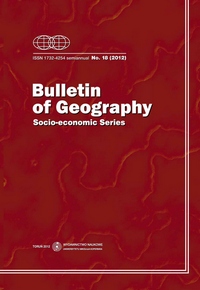A comparative study of local railway networks in Poland and the Czech Republic.
A comparative study of local railway networks in Poland and the Czech Republic.
Author(s): Jakub TaczanowskiSubject(s): Economy
Published by: Wydawnictwo Naukowe Uniwersytetu Mikołaja Kopernika
Keywords: Poland; Czech Republic; local railway line; regional railway line; rail transport; regional transport; scaling down of railway systems
Summary/Abstract: Despite similar economic and legal conditions in Poland and the Czech Republic, the situation of local railway lines in each of these neighbouring countries is completely different. In Poland more than 90% of third-category and over 44% of second-category lines were closed down between 1989 and 2011, whereas the Czech Republic did away with only 14% of its regional lines during the same period. This means that two decades of transformation processes in Poland have resulted in a massive decline in the importance of the regional railway network, which is one of the most important symptoms of a rapid decline in the role of the railway transport system as a whole. By contrast, the Czech Republic still has one of the densest railway networks in Europe, thanks to the vital role of its local lines. The main reasons for this big difference between the two countries – and for the very minor importance of the regional railway service in Poland – are the lack of a realistic transport policy at the state level and the badly conducted restructuring of the national PKP railway company (PKP – Polskie Koleje Państwowe, Polish State Railways). Other reasons are the poor state of the railway infrastructure and also factors connected with the structure of settlement, as well as the historical development of the railways in certain parts of the country. These factors have merely reinforced an already vast bureaucracy and aggravated the wastage for which the PKP was known during the communist period. The main question that arises concerning the future is whether decision-makers in Poland at both national and regional levels – as well as those in the railway companies themselves – will be able to follow the Czech example, as this would appear to be the best solution for the greatest crisis the Polish railway system has seen in decades.
Journal: Bulletin of Geography. Socio-economic Series
- Issue Year: 2012
- Issue No: 18
- Page Range: 125-138
- Page Count: 16
- Language: English

